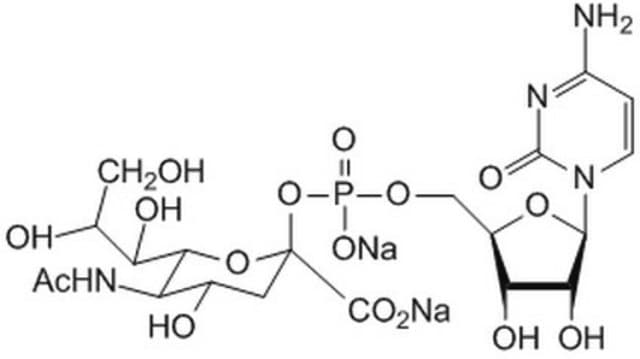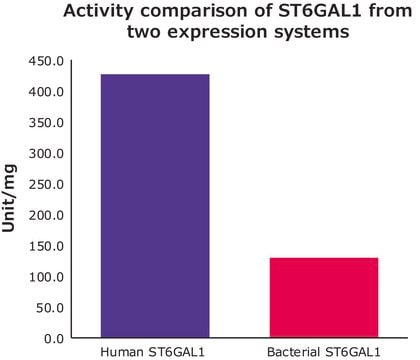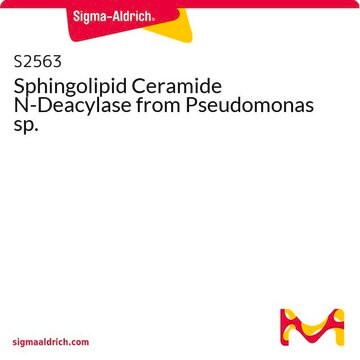C8271
Cytidine-5′-monophospho-N-acetylneuraminic acid sodium salt
≥85% (HPLC)
Synonym(s):
CMP-NAN, CMP-NANA, CMP-Neu5Ac, CMP-Sialic acid
About This Item
Recommended Products
biological source
synthetic (organic)
Assay
≥85% (HPLC)
form
powder
storage temp.
−20°C
SMILES string
[Na+].CC(=O)N[C@@H]1[C@@H](O)C[C@@](O[C@@H]1[C@H](O)[C@H](O)CO)(OP([O-])(=O)OC[C@H]2O[C@H]([C@H](O)[C@@H]2O)N3C=CC(N)=NC3=O)C(O)=O
InChI
1S/C20H31N4O16P.Na/c1-7(26)22-12-8(27)4-20(18(32)33,39-16(12)13(29)9(28)5-25)40-41(35,36)37-6-10-14(30)15(31)17(38-10)24-3-2-11(21)23-19(24)34;/h2-3,8-10,12-17,25,27-31H,4-6H2,1H3,(H,22,26)(H,32,33)(H,35,36)(H2,21,23,34);/q;+1/p-1/t8-,9+,10+,12+,13+,14+,15+,16?,17+,20+;/m0./s1
InChI key
VFRHSOGUONIUOR-CTFMUGKASA-M
Looking for similar products? Visit Product Comparison Guide
General description
Application
- as a standard in high-performance anion-exchange chromatography with pulsed amperometric detection (HPAEC-PAD) for nucleotide sugar analysis in Joubert syndrome type 10 (JBTS10) patient cells and control skin fibroblasts,
- As a substrate for the enzymatic sialylation of G2 glycoforms, resialylation assay,
- in in-vitro sialyltransferase assay
Biochem/physiol Actions
Preparation Note
CMP-NAN is very acid-labile.
Storage Class Code
11 - Combustible Solids
WGK
WGK 3
Flash Point(F)
Not applicable
Flash Point(C)
Not applicable
Certificates of Analysis (COA)
Search for Certificates of Analysis (COA) by entering the products Lot/Batch Number. Lot and Batch Numbers can be found on a product’s label following the words ‘Lot’ or ‘Batch’.
Already Own This Product?
Find documentation for the products that you have recently purchased in the Document Library.
Customers Also Viewed
Articles
Explore tools for glycosyltransferase synthesis and modification of glycans, such as glycosyltransferases and nucleotide sugar donors.
Explore tools for glycosyltransferase synthesis and modification of glycans, such as glycosyltransferases and nucleotide sugar donors.
LC-MS/MS method quantifies similar polar nucleotide activated sugars using Supel™ Carbon LC column for simultaneous analysis.
LC-MS/MS method quantifies similar polar nucleotide activated sugars using Supel™ Carbon LC column for simultaneous analysis.
Our team of scientists has experience in all areas of research including Life Science, Material Science, Chemical Synthesis, Chromatography, Analytical and many others.
Contact Technical Service












